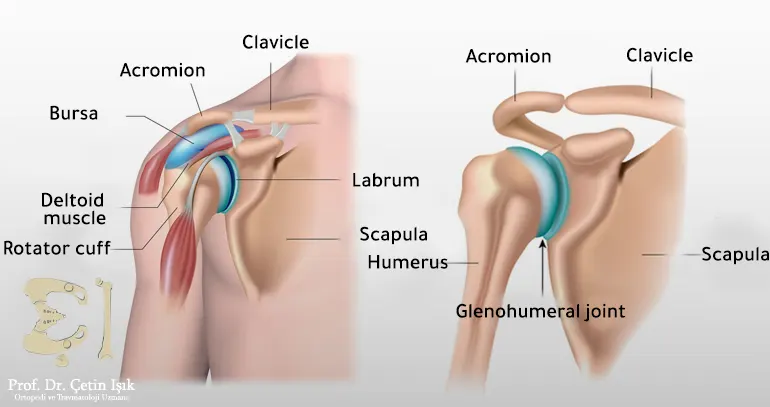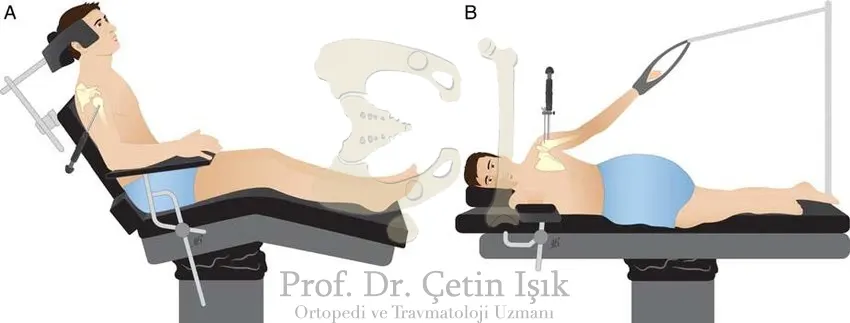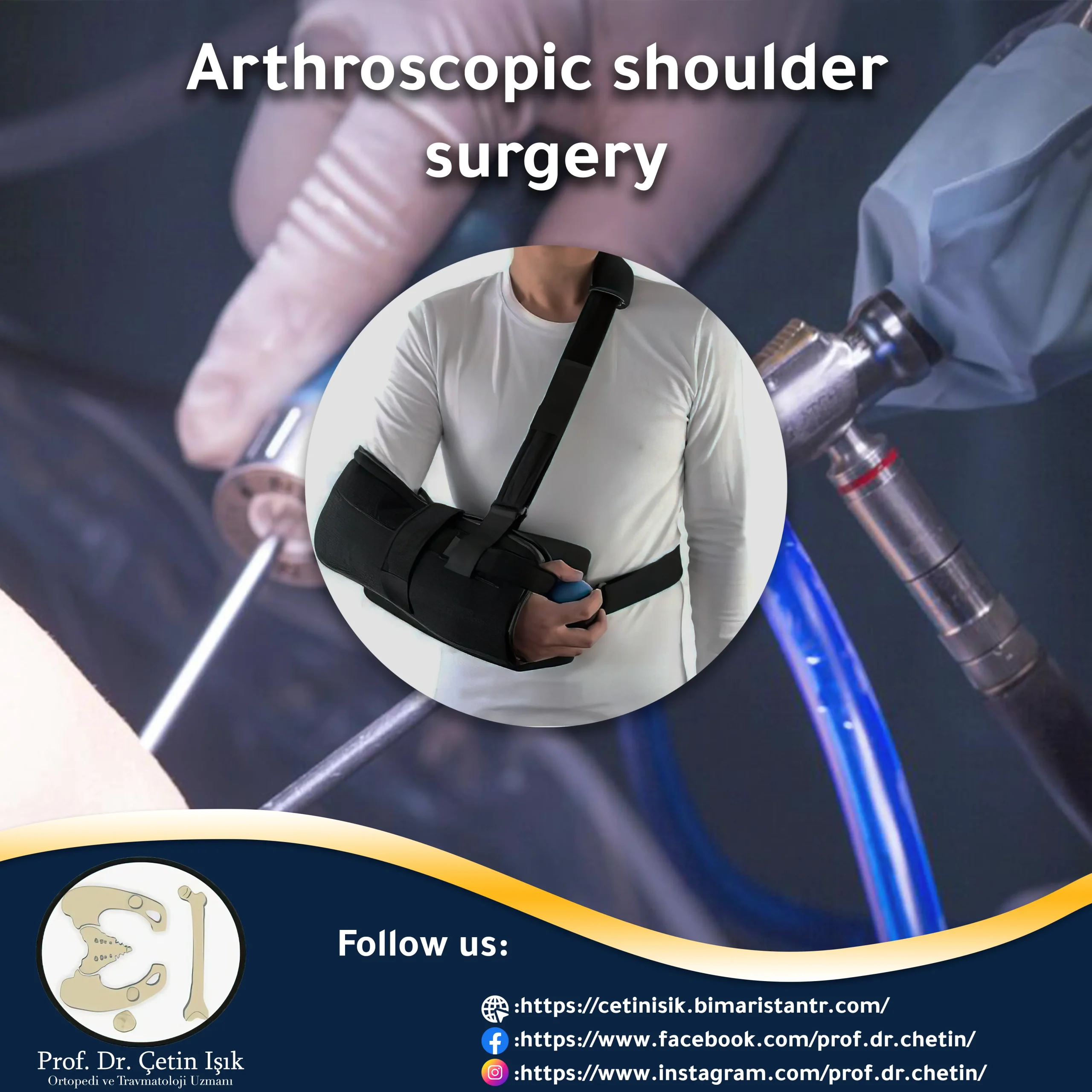ما هي عملية منظار الكتف؟
عملية منظار الكتف (Shoulder Arthroscopy) هي تقنية جراحية حديثة تُجرى عبر شقوق صغيرة جدًا، يتم من خلالها إدخال أدوات دقيقة وكاميرا صغيرة (المنظار) لفحص مفصل الكتف من الداخل، وتشخيص أو علاج الإصابات دون الحاجة لجراحة مفتوحة.
تُعد هذه الطريقة من أكثر الإجراءات شيوعًا في علاج مشاكل الكتف مثل التمزقات، الالتهابات، أو انضغاط الأوتار، وتُجرى حاليًا في إسطنبول باستخدام أحدث الأجهزة الجراحية وتحت إشراف جراحين متخصصين.

الحالات التي يُعالجها منظار الكتف
| الحالة المرضية | هل يُعالج بالمنظار؟ |
|---|---|
| تمزق الكفة المدورة (Rotator Cuff Tear) | نعم |
| التهاب الوتر والتكلسات | نعم |
| خلع الكتف المتكرر | نعم |
| خشونة المفصل | في مراحلها الأولى |
| انحشار أوتار الكتف (Impingement) | نعم |
| تمزق الشفا (Labral Tear) | نعم |
| التهاب الغشاء الزليلي | نعم |
مزايا عملية منظار الكتف
- شقوق جراحية صغيرة (أقل من 1 سم)
- ألم أقل بعد العملية
- نزف أقل وشفاء أسرع
- مغادرة المستشفى في نفس اليوم أو اليوم التالي
- نتائج دقيقة بفضل التصوير المباشر داخل المفصل

لماذا إسطنبول؟
تُعد إسطنبول من أفضل الوجهات الطبية في أوروبا وآسيا لإجراء هذه العملية للأسباب التالية:
| الميزة | التفاصيل |
|---|---|
| جراحون متخصصون في الكتف | مدربون في أوروبا والولايات المتحدة |
| تقنيات حديثة | منظارات متطورة ثلاثية الأبعاد وأدوات جراحية دقيقة |
| تكلفة مناسبة | أقل من 50–70% مقارنة بأوروبا أو الخليج |
| تسهيلات للمرضى الأجانب | الترجمة – النقل – المتابعة – خطط علاج فردية |
| جودة رعاية ما بعد العملية | مراكز علاج طبيعي متخصصة لمرحلة التأهيل |
كيف تتم عملية منظار الكتف؟
- تخدير عام أو موضعي بحسب حالة المريض.
- إجراء شقوق صغيرة (0.5 – 1 سم) حول مفصل الكتف.
- إدخال المنظار لفحص المفصل من الداخل.
- إصلاح التمزقات أو إزالة التكلسات أو الأنسجة التالفة.
- إغلاق الجروح الصغيرة بقطب تجميلية.
مدة العملية تتراوح بين 45 دقيقة إلى ساعتين حسب نوع الحالة.

فترة الشفاء والتأهيل
| المرحلة | المدة التقريبية |
|---|---|
| البقاء في المستشفى | نفس اليوم أو ليلة واحدة |
| ارتداء الدعامة أو الحمالة | 2 – 4 أسابيع |
| بدء العلاج الطبيعي | بعد 7 – 10 أيام |
| العودة للأعمال الخفيفة | بعد 3 – 4 أسابيع |
| العودة للرياضة الكاملة | 3 – 6 أشهر حسب الحالة |
تكلفة عملية منظار الكتف في إسطنبول
| نوع المركز الطبي | السعر التقريبي (دولار أمريكي) | يشمل عادةً |
|---|---|---|
| مستشفى خاص رفيع المستوى | 3,000 – 4,500 | الجراحة – الإقامة – التحاليل – متابعة أولى |
| مركز جراحة العظام التخصصي | 2,000 – 3,500 | الجراحة – زيارة طبيب – صور شعاعية |
| مستشفى جامعي | 1,500 – 2,500 | قد تكون بأسعار رمزية للحالات البسيطة |
مقارنة دولية:
- في أوروبا: 6,000 – 10,000 دولار
- في الخليج: 5,000 – 8,000 دولار
- في الولايات المتحدة: 10,000 – 15,000 دولار
هل عملية منظار الكتف آمنة؟
نعم، ونسبة النجاح في إسطنبول تتجاوز 90% في معظم الحالات. لكن كما هو الحال في أي تدخل جراحي، هناك بعض المخاطر القليلة المحتملة مثل:
- العدوى (نادرة جدًا)
- التيبّس المؤقت للمفصل
- الحاجة لإعادة التأهيل المكثف
تجارب مرضى سابقين في إسطنبول
“كنت أعاني من خلع متكرر في الكتف، وبعد إجراء العملية بالمنظار في إسطنبول، اختفى الألم تمامًا وعدت للرياضة بعد 4 أشهر.”
“خضعت لعملية إزالة تكلسات في الكتف، والنتيجة فاقت توقعاتي من حيث سرعة الشفاء والخدمة الممتازة.”
Common questions
هل سأشعر بألم بعد العملية؟
يكون الألم خفيفًا إلى متوسط، ويُعالج بسهولة بمسكنات بسيطة.
متى يمكنني رفع ذراعي؟
في حالات بسيطة، يمكن رفع الذراع جزئيًا بعد أسبوعين، لكن التمارين الكاملة تأتي تدريجيًا.
هل أحتاج علاجًا طبيعيًا؟
نعم، يعتبر العلاج الطبيعي ضروريًا بعد العملية لضمان استعادة الحركة والقوة الكاملة.
كيف أحجز موعدًا في إسطنبول؟
- إرسال التقارير والأشعة عبر البريد الإلكتروني أو الواتساب.
- التشخيص عن بُعد من قبل الجراح المختص.
- تحديد خطة العلاج وتكلفتها.
- ترتيب السفر والإقامة.
- إجراء العملية والمتابعة بعد العودة.
الخلاصة
إذا كنت تعاني من ألم مزمن في الكتف، أو تمزق في الأوتار، أو خلع متكرر، فإن عملية منظار الكتف في إسطنبول تقدم لك الحل الأمثل بأقل تدخل جراحي وبأحدث التقنيات. توفر المدينة مزيجًا من الخبرة الطبية، والرعاية المتكاملة، والتكلفة المعقولة، مما يجعلها واحدة من أفضل الخيارات العلاجية في العالم.
Sources
Common questions
The average cost of the operation in Istanbul varies depending on whether the operation is diagnostic or therapeutic, and generally ranges between 2 and 5 thousand dollars.
The process takes about an hour, and sometimes it takes two hours.
It reaches about 90%.
Pain and failure of treatment after the operation may lead to the patient's need to re-intervene the affected joint.


